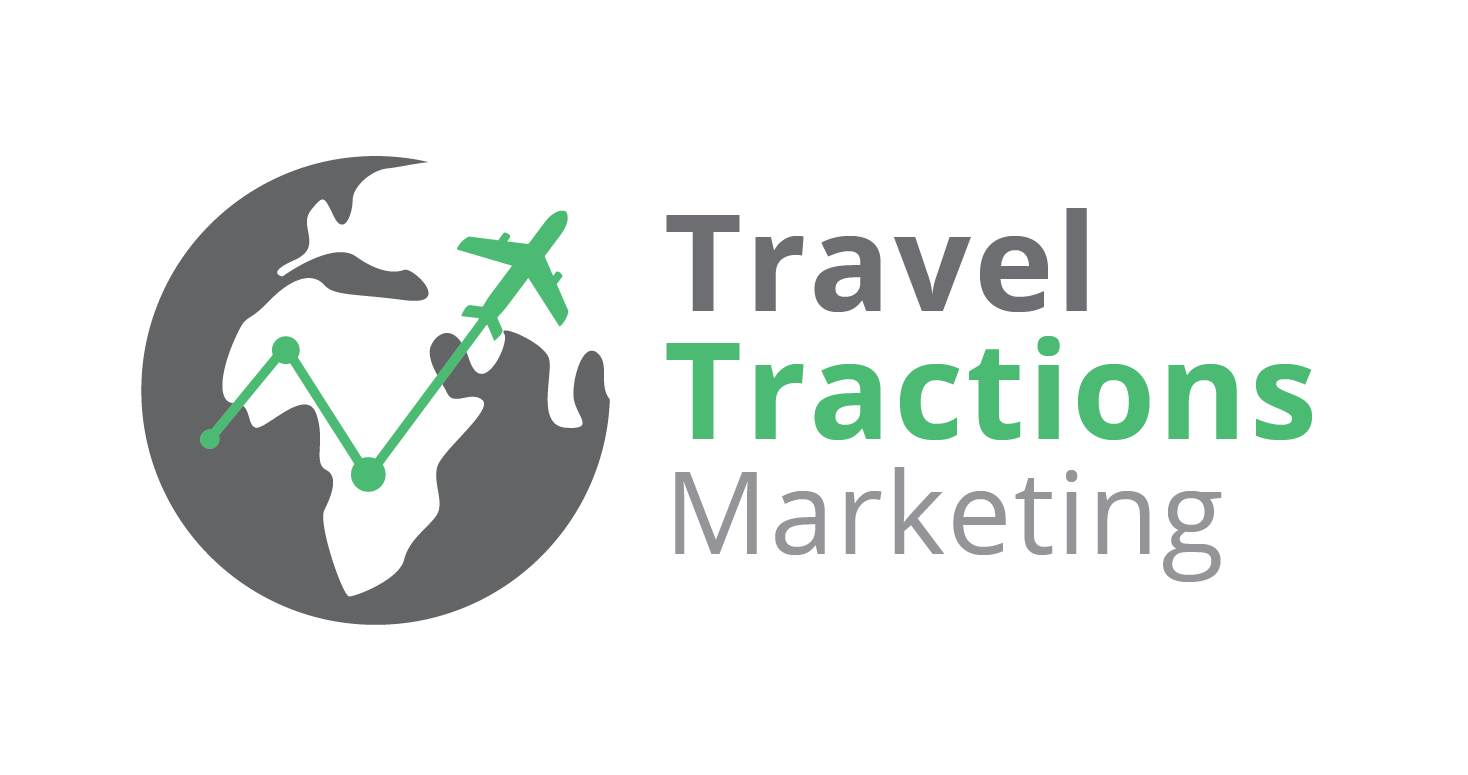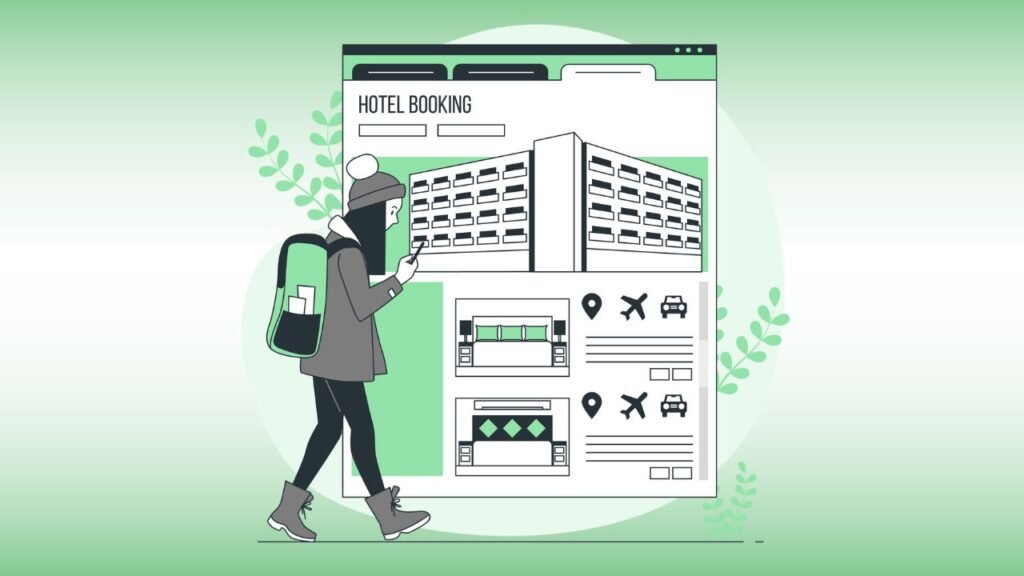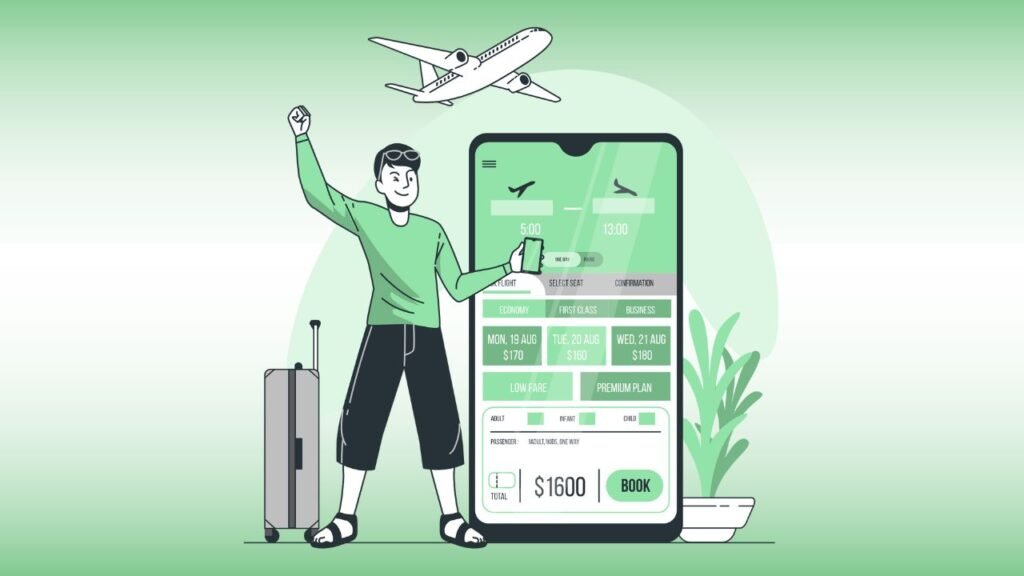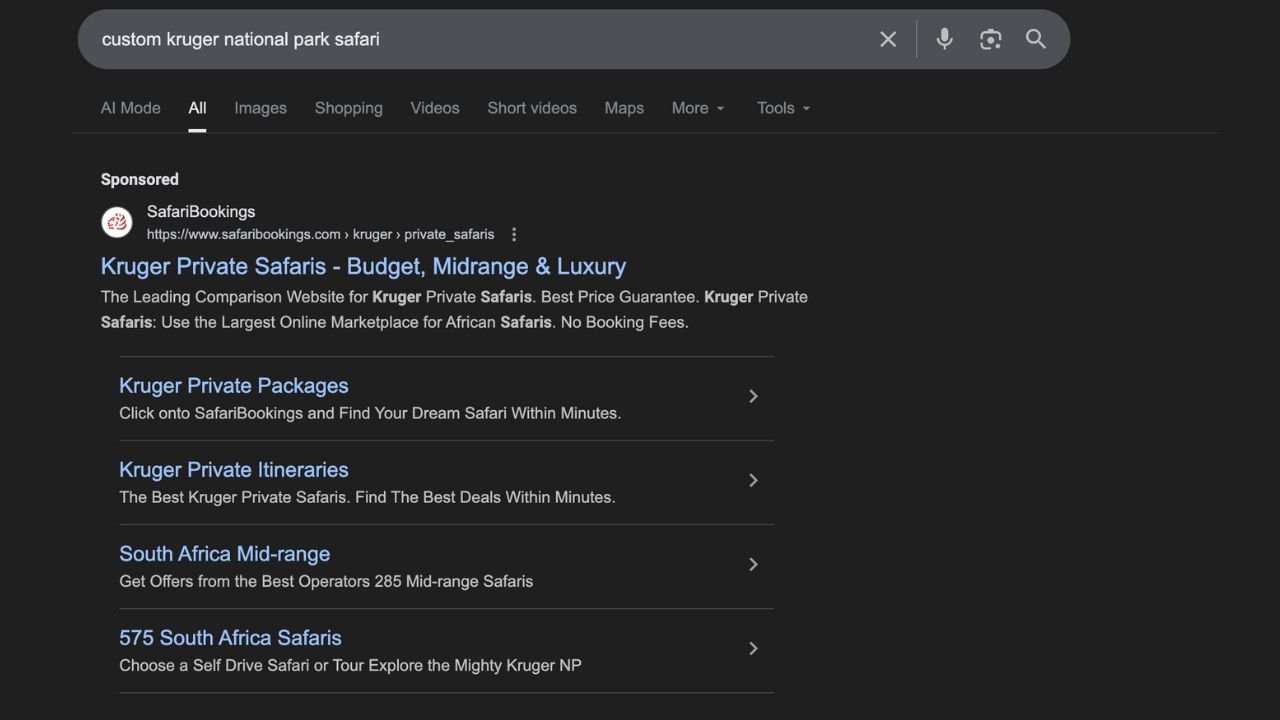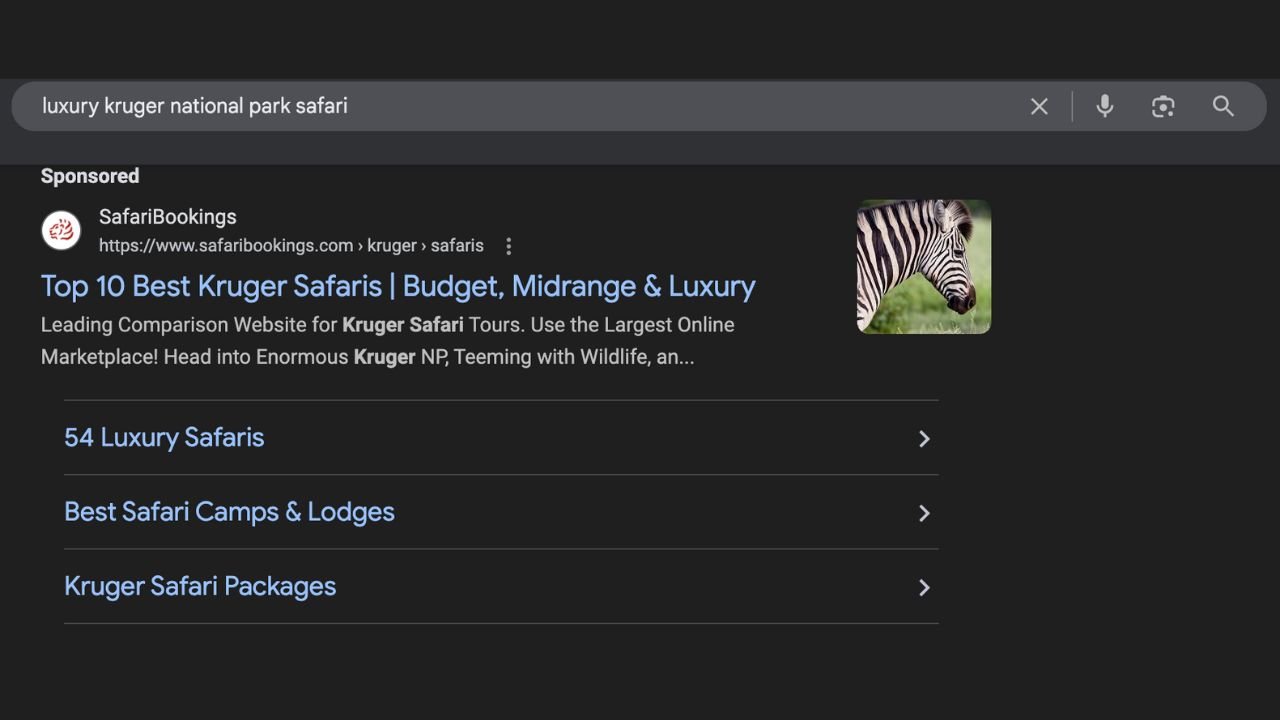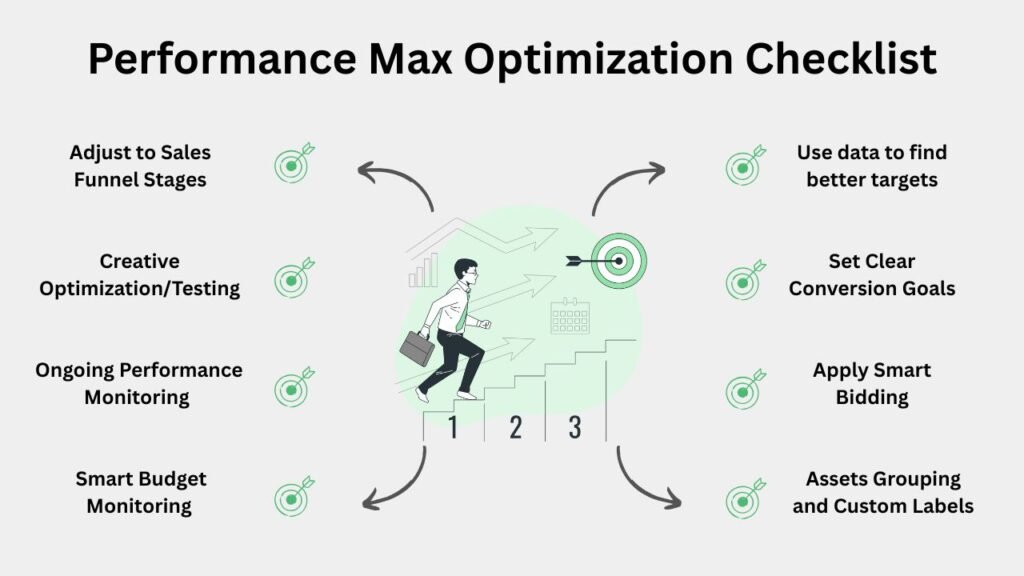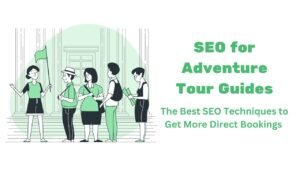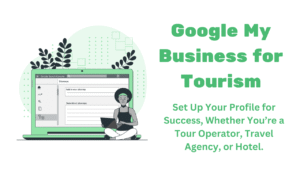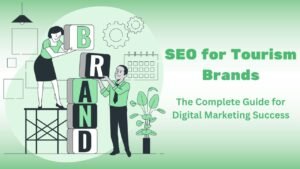
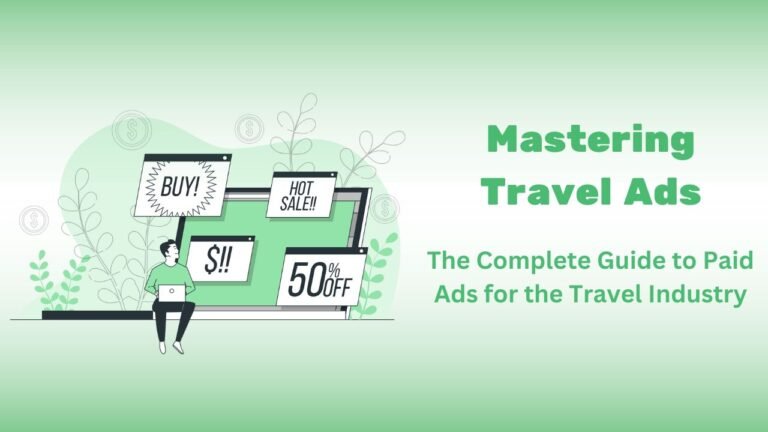
Mastering Travel Ads: A Guide to Paid Ads for the Travel Industry
Every travel company has a low season, but have you ever wondered how you can turn those low-income months into profitable engines? In steps the wonderful world of travel ads, an advanced marketing technique that every tourism business should be using.
Have you tried it in the past and sent thousands of dollars down the drain? That’s not because it’s difficult to master, it’s because there are a few fundamental aspects of digital advertising you simply need to know.
Fortunately, Travel Tractions loves educating business owners so they can make their money work for them. So, if you’re looking to turn off-season lulls into revenue magnets, it’s time to dive into this in-depth guide to travel advertising.
Who Needs to Learn About Travel Advertising
Whether you own a hotel, run a multi-national travel agency, or have a small tour business, the effects of travel digital advertising are far-reaching. Here’s a quick breakdown of what each industry within tourism needs to know about ads.
Hospitality Industry: Hotels, Hostels, & Colivings
Organic traffic can only do so much, and if you want to reduce your online travel agency (OTA) reliance, then travel advertisement is one of the best ways forward.
Digital advertising allows you to attract online travellers and drive more direct bookings. This is significantly helpful if your competitors are outcompeting you. Not only do ads provide the beneficial edge of appearing at the top of the SERPs, but they also let you feature on social platforms, a marketing space that many hotels underutilise.
Some of the key benefits of digital advertising for the hospitality industry include:
- Increased visibility across multiple platforms
- Measurable ROAS (return on ad spend)
- Increase in direct, commission-free bookings
- Higher occupancy rates during your off-peak season
PS: Our guide on Hotel PPC management is a great resource if you want to learn even more about paid ads.
Travel Agencies
The way people search and plan trips is changing. While many travellers still use Google and organic search towards the end of their decision-making process, social media is a place to inspire.
Many travellers are now using platforms like Instagram, TikTok, Facebook, and YouTube to help them plan. However, reaching these potential clients on social media organically isn’t easy. This is where travel agency ads come to the fore.
Digital ads allow travel agencies to:
- Attract new clients
- Promote exclusive travel packages
- Expand brand awareness (an important part of reaching new clients)
- Generate higher-quality leads
PS: Our guide on Google Ads for travel agencies is a great resource if you want to learn even more about PPC.
Tour Operators
While some travellers plan well in advance, not all of them know the activities they want to do upon reaching a destination. This is where tour operators benefit the most, as tourists often make searches like “best Cape Town guided city tour” or “best elephant sanctuary tour in Chiang Mai”.
If you’re not ranking at the top of Google Maps results or are lower down in the SERPs, there’s a high chance you’ll be overlooked. That’s where tour ads can even the playing field.
By using digital advertising, tour operators can:
- Drive direct bookings to high-revenue tours
- Promote niche activities that are often dominated by generic OTA results
- Capture the attention of last-minute planners
- Use geo-targeting to reach nearby travellers
- Increase tour bookings during the off-season
PS: Our guide on PPC for tour companies is a great resource if you want to learn even more about paid ads.
Google Ads for Travel Businesses
Now, Google Ads are still seen as one of the most effective digital marketing tools. Although they can be slightly pricier than Meta Ads (more on these later), Google remains the largest search engine in the world, so the chances of reaching your target audience are high.
Below, we’re going to have a look at the three primary ad types you can use in Google Ads. We’ll highlight the essentials you need to know, best practices for each, and provide some of the best travel ads examples for each ad type.
Google Search Ads for Travel
Simply put, Google Search Ads are simple SERP placements that appear when a query is searched. Depending on how optimised your ad is and your set budget, it’s possible for your listing to include additional links to specific offerings.
In short, this ad type is designed to capture users with high commercial intent, so travellers are actively searching for a product or service you offer.
Note: Of the three Google ad formats, Search Ads generally provide the best ROAS (return on ad spend), a key metric used to measure the success of your ads.
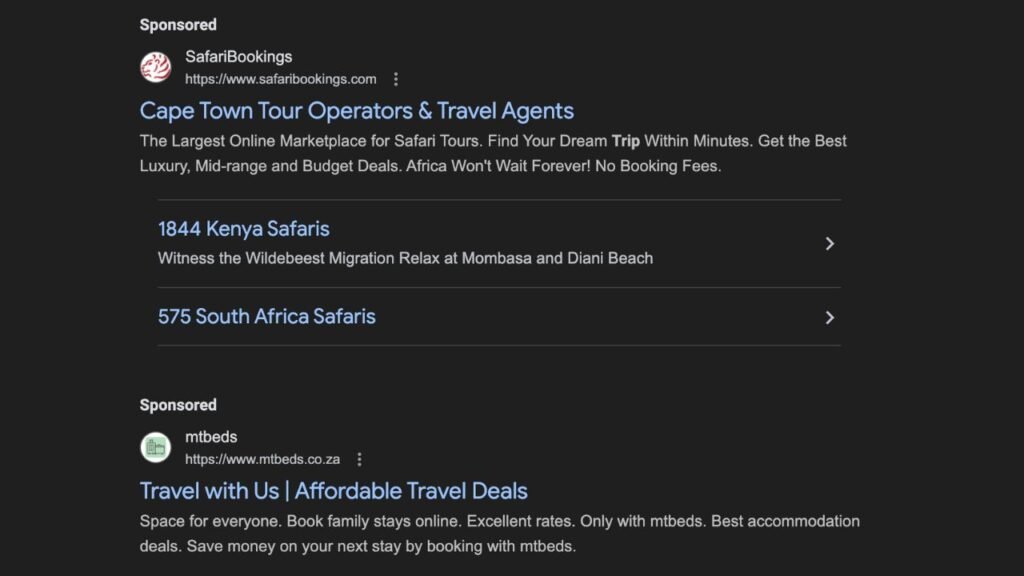
Essentials You Need to Know About Google Search Ads for Travel
There are three primary types of Search Ads you can use:
- Responsive Search Ads (RSAs): You provide up to 15 headlines and four descriptions. Google’s AI then mixes and matches these assets to create the relevant ad for each user.
- Call Ads:– These ads are specifically designed to drive phone calls, with your phone number appearing as the main headline.
- Dynamic Search Ads: Google automatically generates ad headlines and descriptions based on your website’s content.
When it comes to the travel niche, Responsive Search Ads are the most effective. They are the most relevant ad format for generating leads and earning direct sales. It is also the best ad option if you want more control over your ads and how your budget is distributed.
Key Factors You Should Adopt to Enhance Your Search Ad Performance
- Keep titles and descriptions short and punchy: Make sure they don’t get truncated.
- Note the different ways to add keywords:
- Plain keyword = Broad Match: For example, travel agencies near me. This matches your ad to a wide range of queries, from “travel agencies near me” to “best travel agency in America.“
- Keyword in “ ” = Phrase Match: For example, “travel agencies near me”. This means your ad will feature for search terms such as best travel agencies near me.
- Keyword in [ ] = Exact Match: For example, [travel agencies near me]. This means your ad will only feature for this search term.
- Upload images at the correct aspect ratio:
- 1:1 square (1,200 x 1,200 pixels with a minimum 300 x 300)
- 91:1 landscape (1,200 x 628 pixels with a minimum 600 x 314)
- Adding Customisers to dynamically tailor your ad text:
- Location Insertion can mention the user’s city, state, or country, making the ad more relevant.
- Countdown Customisers can generate urgency for sales or special events.
- Keyword Insertion can dynamically update the ad text with the exact keyword a user searched for, increasing relevance.
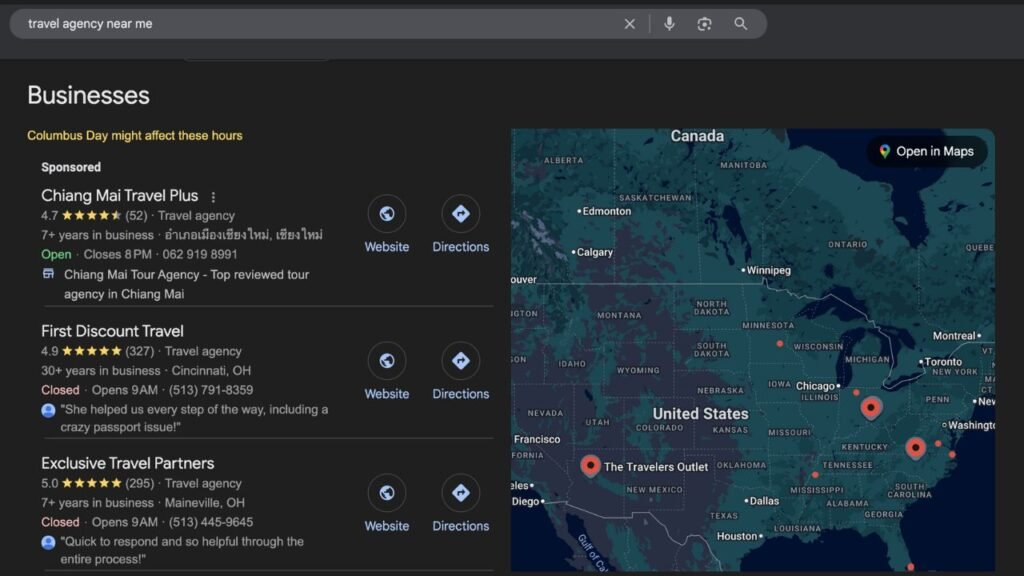
Best Practices for Google Search Ads
- Use Responsive Search Ads: They offer precise targeting by pairing the best assets to match a search term.
- Align with User Intent: Target high-intent booking keywords that align with your ad budget and use destination-specific keywords.
- Leverage Ad Extensions: Use extensions, like sitelinks, callouts, structured snippets, and images, to provide additional value and drive more clicks.
- Use Smart Bidding: Pair RSAs with automated bidding strategies. Use either Target Cost per Action (CPA) or Maximize Conversions to capture new, high-performing queries and trends.
- Regularly Optimise: Google Search Ads aren’t something you leave and hope for the best. Regularly analyse your asset performance and look to replace underperforming assets.
Which Travel Niche Should Target Google Search Ads
While all travel industries can benefit from Google Search Ads, travel agencies should prioritise this ad format. They benefit significantly from capturing leads from high-intent searches that align with their offerings.
Some key strategies to consider include:
- Crafting ad copy that highlights your unique selling points (USP), such as “stress-free planning,” “exclusive discounts,” or “award-winning agents”.
- Targeting high-intent, long-tail keywords to focus on niche searches increases the likelihood of outbidding competitors.
- Promote local and seasonal specials and opportunities.
A Top Google Search Ads Example
One of the best examples of a search ad is SafariBookings’ campaign. Why is it a great example? Here are some of the best practices they followed:
- Responsive search ads showcase dynamic results based on the search query.
- Additional assets for sending searchers to specific packages.
- Short, punchy titles and descriptions that include USP.
- The extended search display allows the website to take up more SERP real estate.
Google Display Ads for Travel
While Google Search Ads are just for placements in search results, Display Ads take things one step further. With Google Display Ads, you can run placements across YouTube, Google Discover, and Gmail.
This ad format also allows you to engage users visually, whether they are browsing online, using a mobile app, or checking their emails. While they aren’t ideal for direct sales, Display Ads are great for brand awareness.
Note: Visual elements are the most important aspect of Google Display Ads.
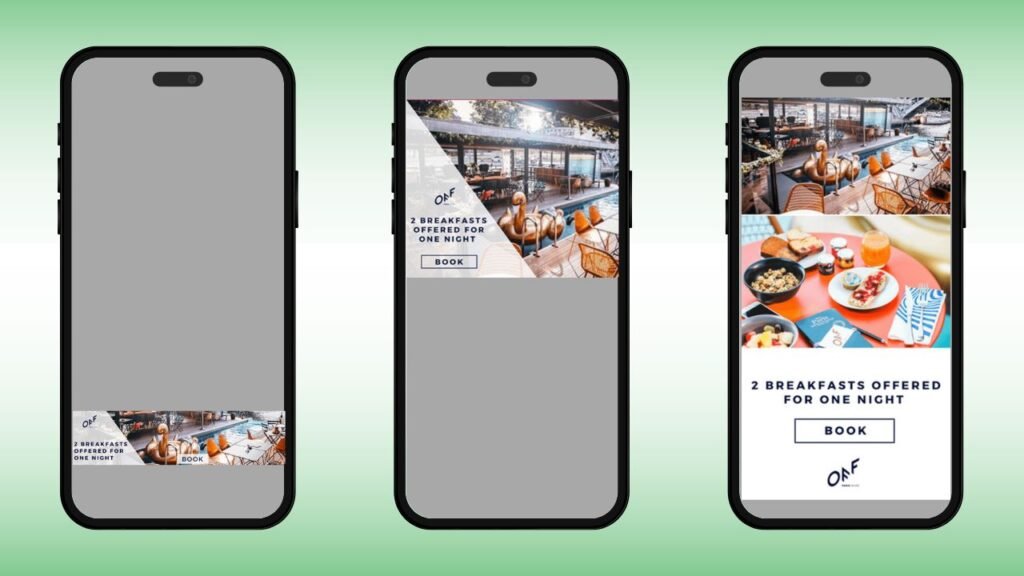
Essentials You Need to Know About Google Display Ads for Travel
There are two distinct ad formats you can use for Google Display Ads:
- Responsive Display Ads (RDAs): You supply assets, such as headlines, descriptions, images, logos, and videos. Then, Google’s AI automatically generates countless ad combinations to fit almost any ad space and device.
- Discovery Ads: You can choose between Single Image and Multi-Image Carousel layouts to tell a story or show the most relevant image.
You’ll want to prioritise the use of RDAs for the travel niche. Much like with Search Ads, you’ll want to adopt a similar range of recommendations when it comes to headlines and descriptions.
Key Factors You Should Adopt to Enhance Your Display Ad Performance
- Keyword targeting is different: Keywords on the display network help you find websites with content related to set terms, and then it shows your ads there.
- Upload logos at the correct specifications:
- Use JPG or PNG with a file size of no larger than 150KB
- 1:1 square (with a recommended size of 1,200 x 1,200 pixels)
- 4:1 landscape (with a recommended 1,200 x 300 pixels)
- Upload images at the correct specifications:
- 1:1 square (1,200 x 1,200 pixels with a minimum 300 x 300)
- 91:1 landscape (1,200 x 628 pixels with a minimum 600 x 314)
- Use the same file type and size as for logos
- Use text minimally and effectively: Display ads are meant to be visual and catch the eye.
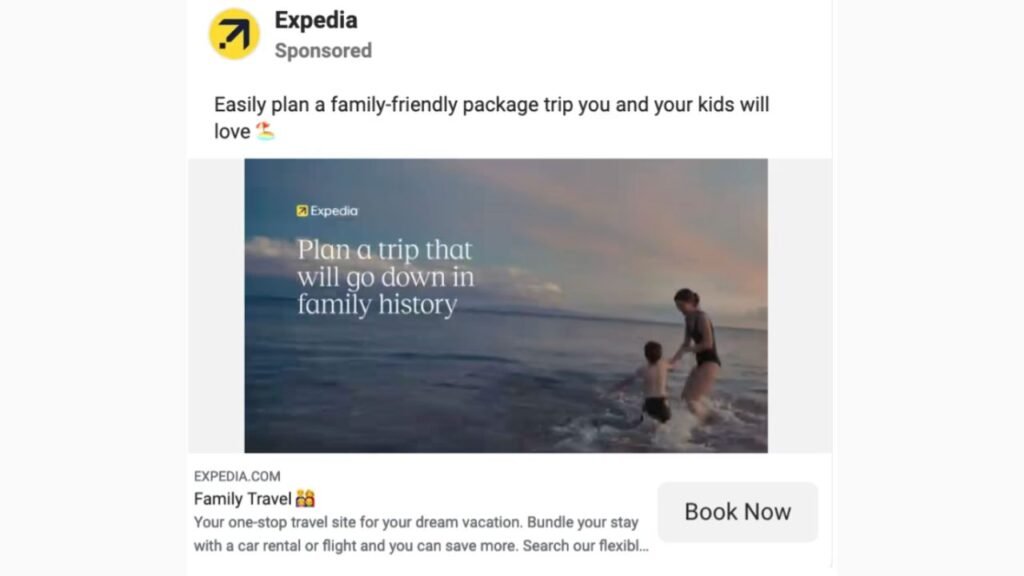
Best Practices for Google Display Ads
- Prioritise High-Quality Visuals: Use high-resolution, captivating images that showcase the destination or experience. Avoid blurry, filtered, or stock-like images. Images are the most crucial asset.
- Focus on the Experience: Use lifestyle and experiential shots, showing travellers enjoying activities to help viewers imagine themselves in that destination.
- Optimise Image Assets: For RDAs, provide 5 to 10 images per aspect ratio (square and landscape are required) and avoid overlaying logos or text to prevent repetition and unreadability.
- Clear Messaging: Use compelling headlines to evoke desire and a clear Call-to-Action (CTA) positioned prominently.
Which Travel Niche Should Target Google Display Ads
While travel agencies can benefit from the awareness that Display Ads present, this advertising format is best suited for tour operators and hotels.
Tour Operators can use visually rich ads to promote specific tours or excursions. This is ideal for a retargeting campaign aimed at convincing previous visitors to your website to book your experience.
Hotels can use image-centric ads to promote the property’s unique atmosphere or amenities. This is especially beneficial if the keyword targeting technique used focuses on serving ads to people currently in the researching phase.
Some key strategies to consider include:
- Crafting ad copy that highlights your USP, like “private tours with local guides”, “luxury rooms at affordable rates”.
- Targeting websites relevant to your ad by using 5 to 15 keywords.
- Promote local and seasonal specials and opportunities.
A Top Google Display Ads Example
One of the best examples of a Display Ad is Booking.com’s campaign. Why is it a great example? Here are some of the best practices they followed:
- Short, punchy, and clear messaging
- Prioritises visual elements
- Emphasises its USP
- Has a great CTA
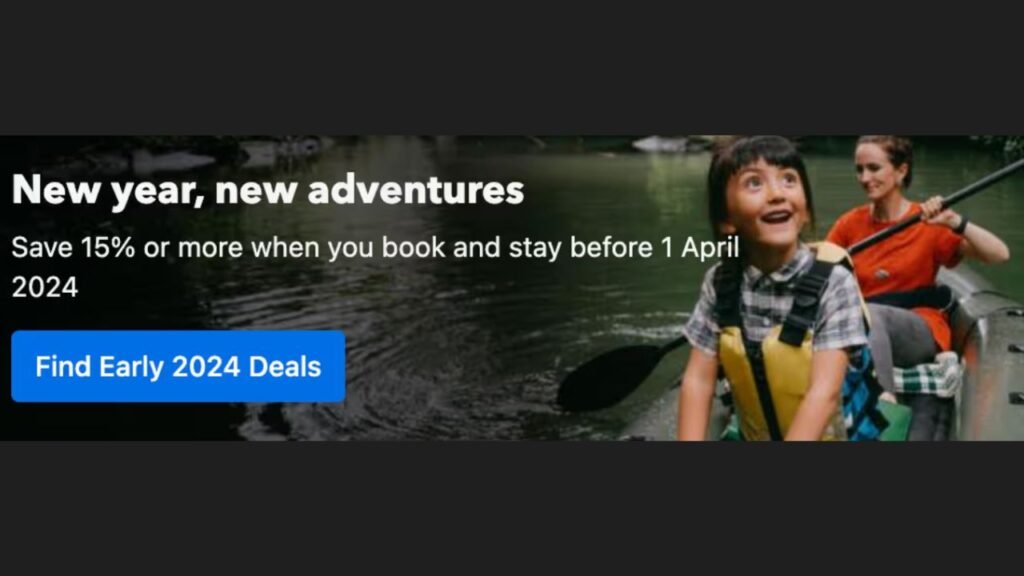
Google Video Ads
Video Ads are primarily used on YouTube and are a great way to bring your brand to life. YouTube ads are usually ideal for boosting awareness and targeting travellers currently in the research and discovery phase of their buying process.
This is the most visual and captivating advertising opportunity, but it should be worth considering the costs involved in this ad type. From production costs to competitive ad placements, it can be a pricey but very effective ad format.
A good example of a captivating YouTube ad
Essentials You Need to Know About Google Video Ads for Travel
There are six distinct ad formats you can use for Google’s YouTube ads:
| Ad Format | How It Works | What It Is Best For |
| Skippable In-Stream Ads | Plays before, during, or after a video. Viewers can skip after 5 seconds, and you only pay if they either watch for 30 seconds, finish the ad, or click the link. | Driving bookings and traffic |
| Non-Skippable In-Stream Ads | This is a 15 to 60-second video ad that viewers must watch before continuing their video. | Delivering a critical message |
| In-Feed Ads | Appears as a thumbnail in YouTube search results, on the homepage, or next to related videos. Viewers must click to watch. | Capturing high-intent viewers |
| Bumper Ads | A very short, 6-second, non-skippable ad. | Brand awareness and recall |
| YouTube Shorts Ads | A skippable 15-60 second ad | High engagement and brand awareness |
| Masthead Ads | Maximum 30-second video ads that feature on the homepage feed without sound. These ads are only available on a reservation basis. | Drive awareness. Ideal for sales events. |
The ad format you use should depend on your goals. When setting a bidding strategy, most travel brands use a Cost-Per-View (CPV) model. This means you’ll only get charged when someone either watches your ad for a certain amount of time (dependent on the ad placement) or clicks the link on your ad.
Once your budget is set, it’s imperative that you define your audience. Some of the most popular techniques include targeting users based on their demographics, interests, and what they are searching for. Alternatively, you can target people based on whether they’ve engaged with your website, which is ideal for remarketing purposes.
Key Factors You Should Adopt to Enhance Your YouTube Video Ad Performance
The most important thing you should utilise for your Video ads is the ABCDs of Creative:
- A = Attention: Hook and sustain attention with an immersive story. Start fast and keep an upbeat pace to draw viewers in.
- B = Branding: Brand early, often, and richly. Introduce your brand or product from the start.
- C = Connection: Encourage people to think or feel something. Feature people and lean into emotional levers like humour or intrigue.
- D = Direction: Ask people to take action. Include a clear Call-to-Action (CTA) and reinforce it with audio.
Example of a YouTube ad cleverly using the ABCDs of Creative
Best Practices for Google Video Ads
- Build for Mobile & Sound On: Optimise visuals for small screens by using tighter framing, large-type supers, and high contrast. Also, use music and/or dialogue to complement visuals since YouTube is built for sound-on viewing.
- Visual Storytelling: Use video to narrate the experiences your brand provides, offering a tantalising glimpse of what awaits them. Destination videos should encompass must-see attractions and unique local experiences.
- Experimentation: Use Video Experiments (A/B testing) to test different creative elements (narrative, pacing, CTAs) to determine which drives the best results.
Which Travel Niche Should Target Google Video Ads
Hotels, travel agencies, and tour operators can all look to leverage YouTube ads. It is worth noting that you’ll most likely be competing with OTAs for ad space, so this advertising format can be expensive.
If you do opt for YouTube ads, consider using visual storytelling to showcase what you have to offer in the most captivating and encouraging way possible.
A Top Google Video Ads Example
One of the best examples of a Video Ad is Airbnb’s Girls Trip campaign. Why is it a great example? Here are some of the best practices they followed:
- Short, punchy, and clear messaging
- Clean and easy to follow visuals
- Optimised for sound on
- Targeting a very particular audience
- Has a great CTA
Example of Airbnb’s Video Ad targeting female travellers
A Note on Performance Max Campaigns
Performance Max (PMax) campaigns are Google’s AI-driven, cross-channel solution designed to find more converting customers across all Google channels from a single campaign.
Performance Max campaigns can work for travel companies, but there are a few things you need to be aware of.
The Pros and Cons of Performance Max for Google Tourism Ads
| Pros of Performance Max Campaigns | Cons of Performance Max Campaigns |
| Unified Management & Reach: Access all Google inventory (Search, Display, Video, etc.) from one campaign, which simplifies management and reduces manual effort. | Limited Control: Marketers have minimal oversight over specific placements, keywords, or channel budget allocation, often leading to a “black box” optimisation process. |
| AI-Powered Optimisation: Uses Google’s machine learning to optimise bidding and ad delivery in real-time, often leading to higher conversion rates and value. | Reduced Transparency: Granular data is often missing or aggregated. You cannot easily see which specific keywords, placements, or ad assets drove a conversion. |
| Unlocks New Audiences: The automation finds new converting customer segments you might have missed with keyword-based targeting. | Cannibalisation Risk: PMax can sometimes steal conversions from existing, well-performing Search or Shopping campaigns, making it hard to judge incremental value. |
| Automated Video Creation: Google can auto-generate basic video ads from your images and text, lowering the barrier to entry for video advertising. | High Data & Budget Requirements: PMax needs significant conversion data (ideally 20–30 conversions/month minimum) to learn and perform. Campaigns with very small, tight budgets or low conversion volumes risk wasting money during the learning phase. |
Meta Ads for Travel Businesses
Now, let’s get stuck into Meta Ads, a slightly more affordable and, in some cases, more effective advertising environment if done correctly. Meta allows you to connect and target potential clients on social media platforms, from Facebook and Instagram to WhatsApp and even the Meta Audience Network (encompassing third-party apps and websites).
Meta Ads are broken down into three distinct sections:
- Campaign: This is where you set your key parameters for the campaign. This includes aspects such as buying type, campaign objective, and budget.
Note: Auction is the most common buying type used. Meta can also go up to 75% over the daily budget on a specific day; however, it will never exceed the maximum weekly cap that your daily budget adds up to.
- Ad Set: This is where you further define your campaign, with the ability to create multiple ad sets under one campaign. Here you can select the conversion type, ad set budget allocation, your target audience, and where your ads are delivered.
Note: Ad Sets offer a great opportunity to create different segments through audience splits, so your budget is allocated to your unique target audiences more accurately. Ad Sets also provide a great opportunity for A/B testing.
- Asset: This is where you’ll be able to add your unique ads for each campaign. You can add several assets, ranging from video ads to carousel ads.
Note: It is recommended that you create multiple variations of each asset to improve the likelihood of your campaigns reaching your audience with targeted content.
Meta Carousel & Image Ads
Image and Carousel Ads are a fantastic, low-cost advertising option on Meta platforms. They are highly visual and offer you the opportunity to tell a story about your business or service using multiple images.
Carousel Ads specifically offer a fantastic opportunity to drive discovery and showcase your diverse offerings.
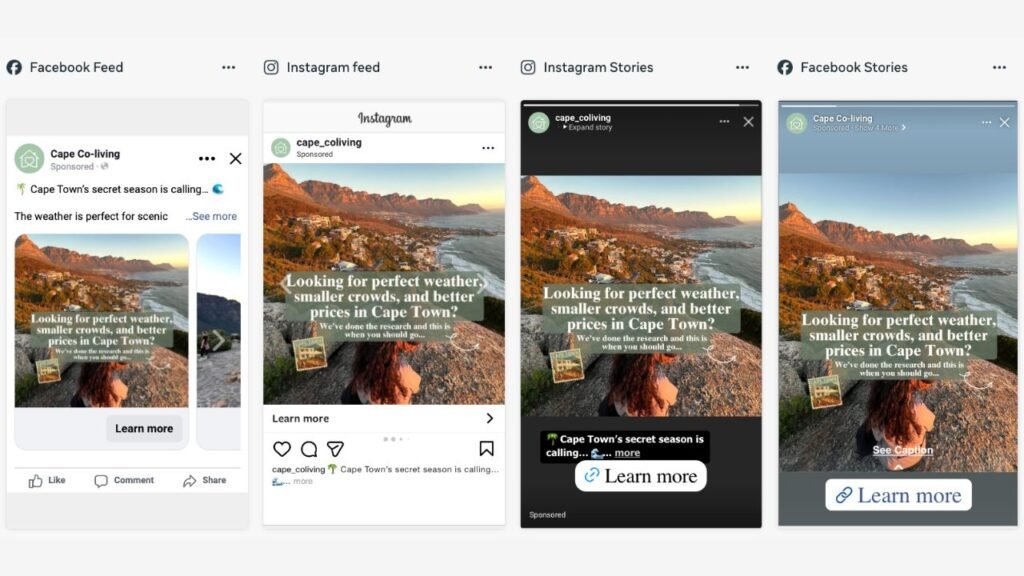
Essentials You Need to Know About Meta Carousel and Image Ads for Travel
While you can use Single-Image Ads, Carousel Ads are far more common and generally slightly more effective. That said, here are some essentials you need to consider for both image and carousel ads.
Key Factors You Should Adopt to Enhance Your Meta Image and Carousel Ad Performance
- Format Flexibility
- Single-Image Ads convey a clear, singular value proposition (e.g., a limited-time offer).
- Carousel Ads allow up to 10 swipeable cards, each with its own image/video, headline, description, and Call-to-Action (CTA) link.
- Storytelling Tool: Carousels are ideal for telling a story, showcasing multiple products, or highlighting different aspects of a single product/service.
- Best Specs: As this works well in the Feed and other key areas.
- Use JPG or PNG file types with a maximum size of 30MB per file
- 1:1 square aspect ratio (with a recommended pixel size of 1,080×1,080)
- Ad copy text up to 125 characters
- Heading up to 40 characters
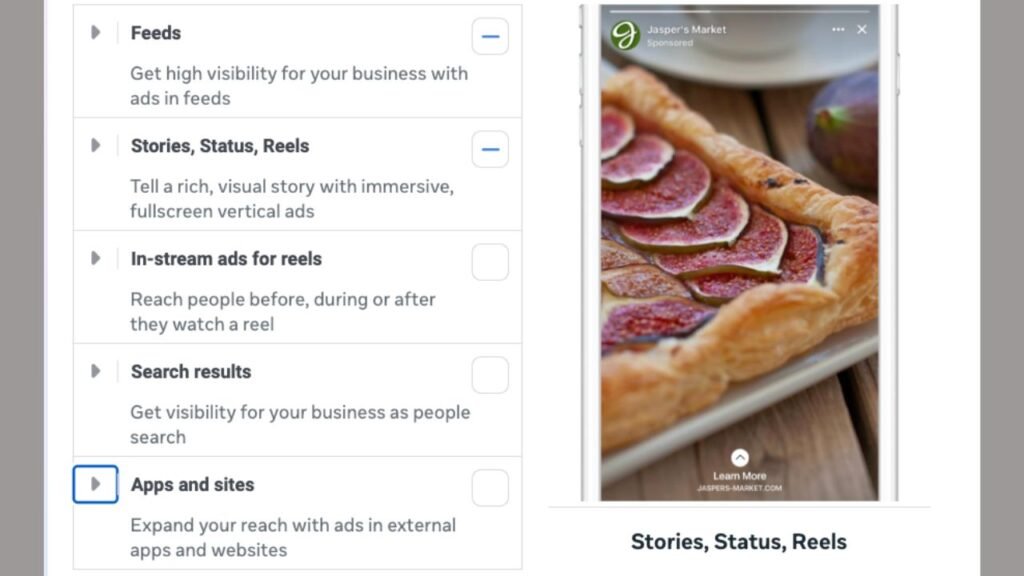
Best Practices for Meta Carousel and Image Ads
- Lead with the Best Visual: The first carousel card must be your strongest image to hook attention, as users will always see it regardless of whether they swipe.
- Narrative Arc for Carousels: Use the cards to guide the user:
- Hook (Card 1): Present a curiosity driver or pain point.
- Context/Discovery (Cards 2-5): Showcase highlights, features, or a step-by-step process (e.g., a travel itinerary preview).
- CTA (Final Card): End with a clear action push like “Book Now” or “Plan Your Adventure”.
- Compelling Copy: Keep primary text brief (aim for 125 characters or less), focus on benefits, and use a strong, clear CTA.
- A/B Test the Hook: Experiment with different first images, headlines, and CTAs to see what resonates best with your audience.
Top Tip: Consider adding sound/music to your Carousel and Image Ads to make the ad even more engaging.
Which Travel Niche Should Target Meta Carousel and Image Ads
Carousel and Image Ads can be an extremely effective way to target your audience at the discovery stage of their buying journey. With Instagram and Facebook often used by travellers to find inspiration, it’s a great place to present deals and USPs from the get-go.
While there are several ways you can approach these ads, here are some good strategies that tend to work well:
- Hotels: Showcase multiple amenities (pool, rooms, restaurant, etc.) or different room types in a single carousel. Promote off-season bookings using your USPs.
- Travel Agencies: Use carousels to preview itineraries or highlight different vacation packages.
- Tour Operators: Use user-generated content (UGC) to inspire travellers to book your tours.
A Top Meta Carousel and Image Ads Example
Qatar Airways’ single-image ad and Booking.com’s carousel ad are two great examples of effective Meta Ads. They both work for several reasons:
- Inspiring and compelling imagery
- Clear messaging
- They both provide a strong USP and CTA
- They are simple but effective ads
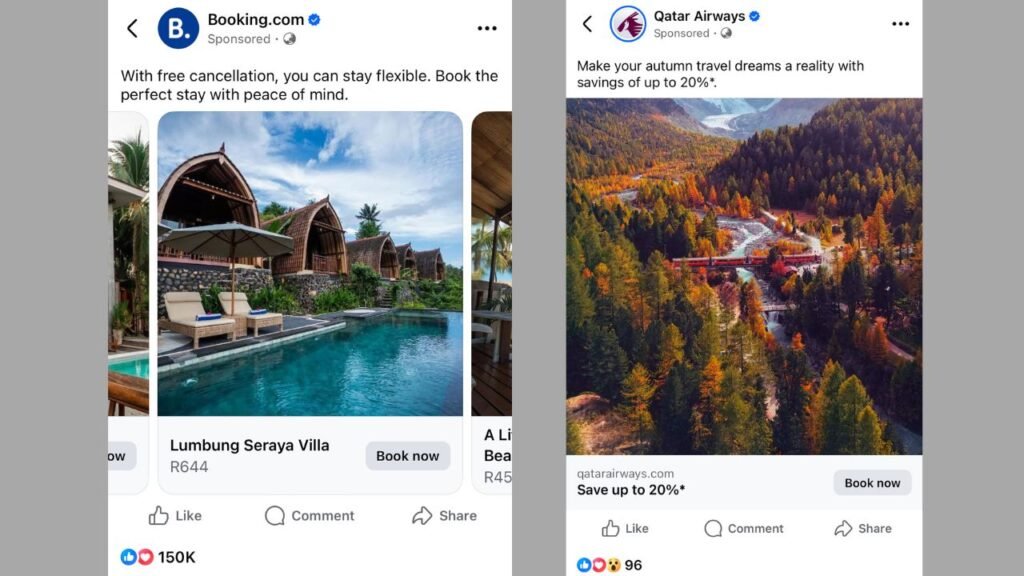
Meta Video Ads
Now, let’s talk about the golden goose of the Meta Ad space: Video Ads. These are highly visual and engaging ads that are ideal for driving action through immersive storytelling. They provide a vertical format for Reels and Stories, allowing your ad to occupy the entire screen and ensuring viewers only focus on what you are offering.
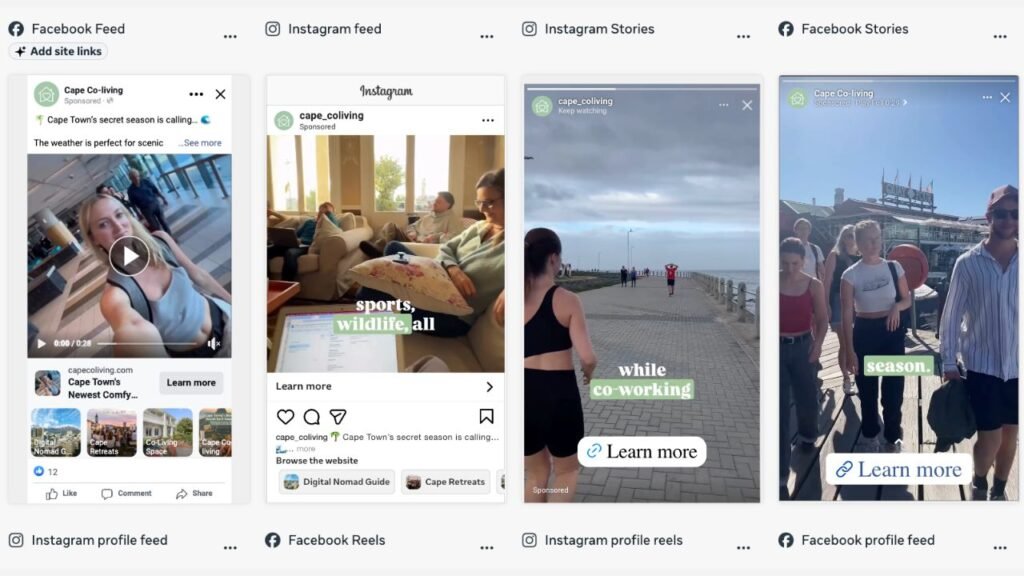
Essentials You Need to Know About Meta Video Ads for Travel
When it comes to Meta Video Ads, there are several aspects that you will need to keep in mind when creating your content. These include:
- Vertical-First is King: Use the 9:16 vertical aspect ratio (Reels and Stories) for an immersive, native experience that dramatically increases engagement.
- Speed is Critical: You have seconds to make an impression. Use fast cuts, movement, and sound right from the start to grab attention early.
- Sound On, Captions Required: Design your videos for sound-on viewing, leveraging music and dialogue. Also, look to include captions or text overlays to convey the message for the majority of users who watch with sound off.
- Video Format Evolution: Meta has consolidated its video ecosystem; most video content uploaded to Facebook is now treated as the highly visible Reels
- Respect Safe Zones: Ensure critical elements like the CTA, logos, or key messaging are placed in the safe zones of the vertical screen so they aren’t covered by the Reels or Stories user interface (UI).
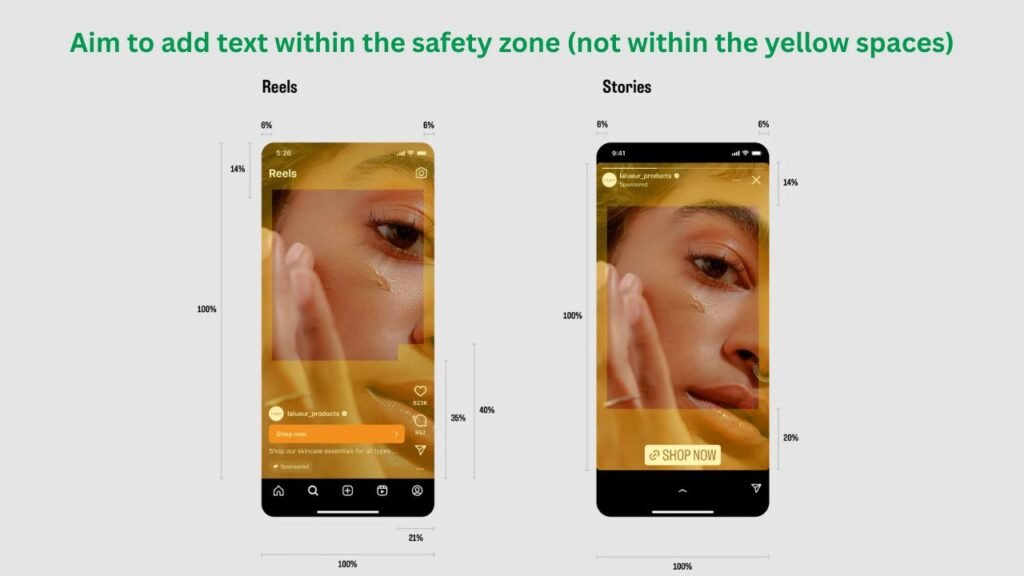
Best Practices for Meta Video Ads
- Build for Authenticity: Leverage User-Generated Content (UGC) and Testimonials to build credibility, as people trust real client reviews more than polished sales pitches.
- Tell an Emotional Story: Craft a narrative that evokes an emotional response by showcasing real-life scenarios.
- Reels Structure:
- Beginning: Have a hook, grab their attention and consider using thumb-stopping techniques.
- Middle: Maintain their attention with meaningful content.
- End: Add the CTA or reward encouraging views to click the ad.
- Iterate and Test: The travel market changes constantly. Test micro-variants (e.g., different hooks, CTAs, audio) frequently to discover what resonates best.
Which Travel Niche Should Target Meta Video Ads
All travel brands can see results from the benefits of Meta Video Ads. While they can all follow the general best practices, each might want to adopt a unique strategy, such as:
- Tour Operators: Use dramatic drone shots, “Day in the Life” videos, and UGC to showcase the experience of a tour.
- Hotels: Offer virtual tours or engaging lifestyle videos highlighting the property’s unique atmosphere. Promote the benefits of off-season travel if looking to book out the low season.
- Travel Agencies: Use video testimonials or customer experience reels to build trust and show off custom itineraries.
A Top Meta Video Ads Example
A great example of an effective Meta Video Ad is Cape Coliving’s Shoulder Season promotional video. Why is it a good example? That’s because it’s doing these things correctly:
- Using the safety zones effectively
- Tight cuts between scenes
- Uses sound and text well
- Makes the most of UGC to create a story
- Has a clear hook at the start and a CTA at the end
- The ad is pushing for inquiries during its slow season
Example of Cape Colivings’s Meta Video Ad that is converting well
A Note on Advantage Plus
Meta Advantage+ is a suite of AI-powered tools designed to automate campaign management. These automated actions include targeting, budget allocation, creative selection, and placements, with the aim of maximising conversions and Return on Ad Spend (ROAS).
It is most commonly used in Advantage+ Shopping Campaigns (ASC) for e-commerce, but its audience, placement, and budget tools are applicable across objectives. That said, there are some key considerations to take into account for travel brands.
The Pros and Cons of Advantage+ for Instagram and Facebook Travel Ads
| Pros of Advantage+ for Travel Brands | Cons of Advantage+ for Travel Brands |
| Improved Performance & ROAS: AI optimises bidding and delivery in real-time, often leading to lower Cost-Per-Acquisition (CPA). | Limited Control & Transparency: Minimal manual control over specific placements and budget allocation between ad sets. |
| Time & Resource Efficiency: Automation handles heavy lifting, freeing marketers to focus on strategy and the ad creative. | Creative Risk: AI may automatically adjust or crop creative in ways that dilute the brand message or cut off vital text. |
| Dynamic Budget Allocation: Automatically shifts budget to the best-performing ad sets and placements in real-time, preventing overspending on poor performers. | Data Dependency: Requires significant conversion data to learn and perform optimally. |
| Audience Discovery: Leverages Meta’s data to find new, high-intent users you might have missed with manual targeting. | Targeting Limitations: For acquisition campaigns, it may not automatically exclude warm audiences, potentially showing ads to existing customers if not manually excluded. |
Other Noteworthy Platforms for Tourism Advertising
While Google and Meta are the best places to advertise, don’t overlook other platforms for niche audiences.
- TikTok for Business offers immense reach with younger demographics through viral videos, though its users often have lower booking intent.
- Pinterest Ads is a visual discovery engine perfect for travellers in the early planning and inspiration stage, but keep in mind that Pinterest has a predominantly female audience.
- X Ads (formerly Twitter) is great for real-time updates and customer service, but your ad lifespan will be short due to the platform’s focus on real-time conversations.
- LinkedIn Ads is unparalleled for B2B and corporate travel, but it is less relevant for leisure campaigns. It’s also one of the most expensive digital ad platforms available.
These platforms are powerful for brand awareness, but often secondary due to less direct conversion tracking. That said, it’s best to pick your ad platform based on your business goals.
Key Factors to Consider When Crafting An Advertising Campaign
- Define Your Audience: One of the most important aspects of your campaign is defining your target audience. A good rule of thumb is to create two segments: a broad audience and a targeted audience. This will help your campaign identify and understand who to target to maximise your ad budget. It’s best to generate at least 50 conversions for each segment to acquire enough data before you adjust your audience.
- Segment Your Market: You know your market better than anyone. As such, segmenting who you target based on your goals is the best way to see positive results.
- Setting your Budget: Make sure you set a budget that aligns with your desired results. A good way to do this is to establish how many sales you need to earn from your ads in order for you to turn a profit. If it’s very high, it may be worthwhile setting a lower budget so the ROAS reflects evenly.
- Choosing the Right Platform: You know your audience, and this means you understand where they are most likely to engage with your ads. Choose the platform based on your goals, target audience demographic, and average engagement trends.
- Optimise for Mobile: With the majority of engagement for social media platforms taking place on mobile and nearly 60% of global website traffic coming from mobile, it’s important that your ads cater to this.
- Leverage Seasonality: Travel is seasonal, and this is where ads can turn off-season lulls into profitable times of the year. Look to leverage travel ads leading up to your annual off-peak season in an effort to increase sales. It can help to run your ads throughout the year on a low budget, and then increase the ad spend leading into the off-season.
- Retarget When Possible: Running retargeting campaigns can be one of the most effective ways to see increased inquiries and sales. Look to filter your target audience based on if they have recently visited your booking page and have actively engaged on your website. This can help you target people who were previously interested in your services but didn’t convert.
- Regularly Analyse Performance: One of the most crucial aspects of any ad campaign is regularly analysing and performance tracking. It’s best to do this weekly if possible; if not weekly, then at least once a month. This will help you understand ad trends and identify opportunities to improve your ads and their overall performance.
Note: Make sure you have set up your APIs to correctly track and analyse your ad performance. For Meta Ads, have a look at this quick API set-up guide. For Google Ads, have a look at this API guide.
Final Thoughts on Mastering Travel Marketing Advertising
There you have it, a comprehensive introduction to travel advertising. We know, this is an extremely in-depth guide, and may be a bit daunting for first timers, but the knowledge you’ll gain is truly invaluable.

